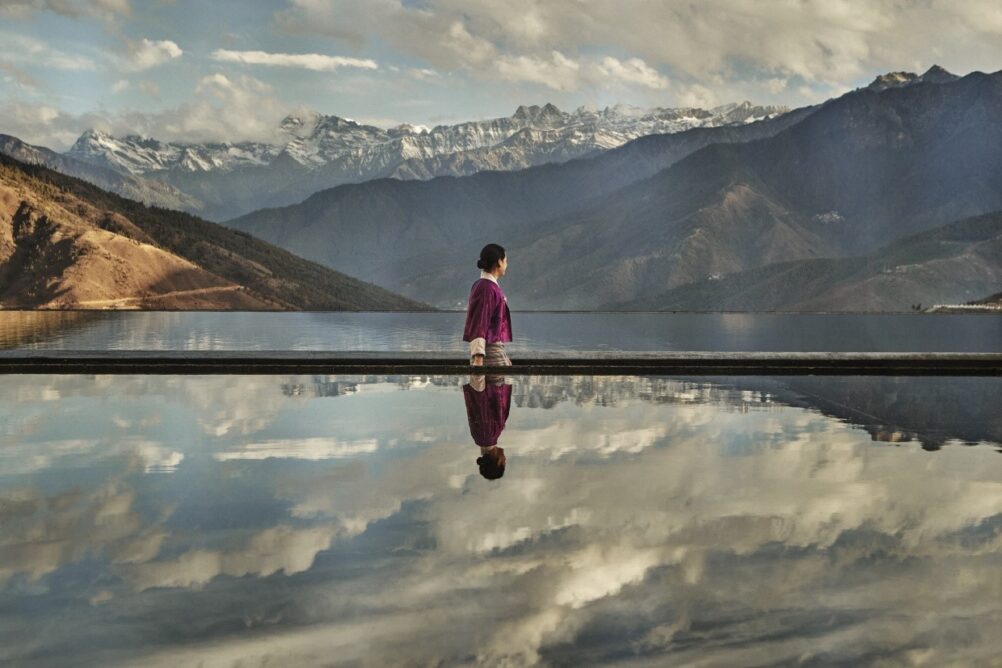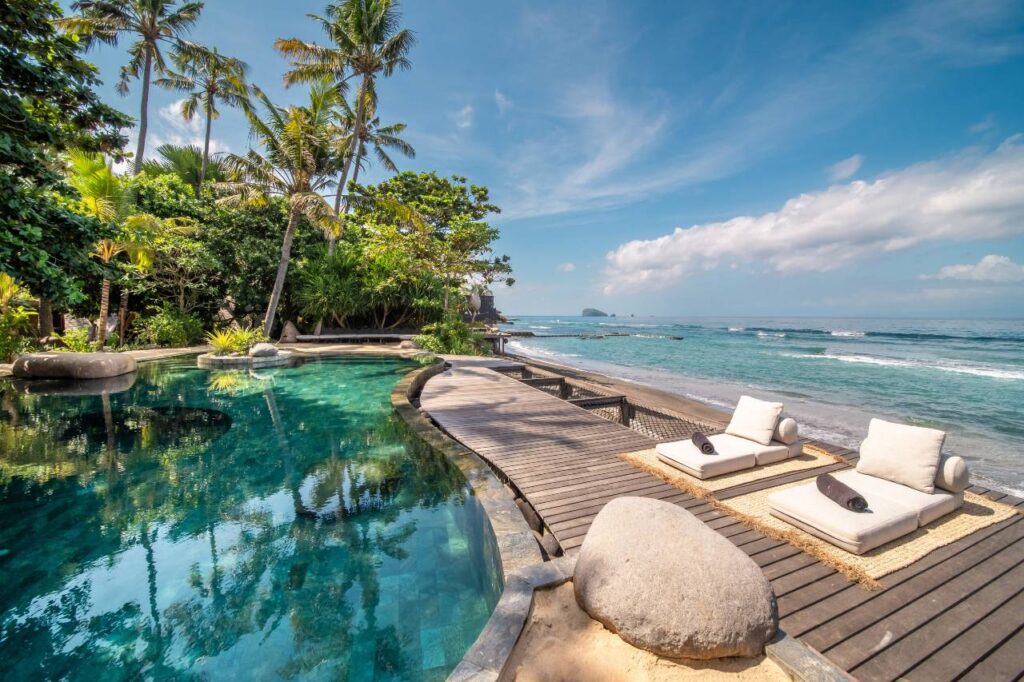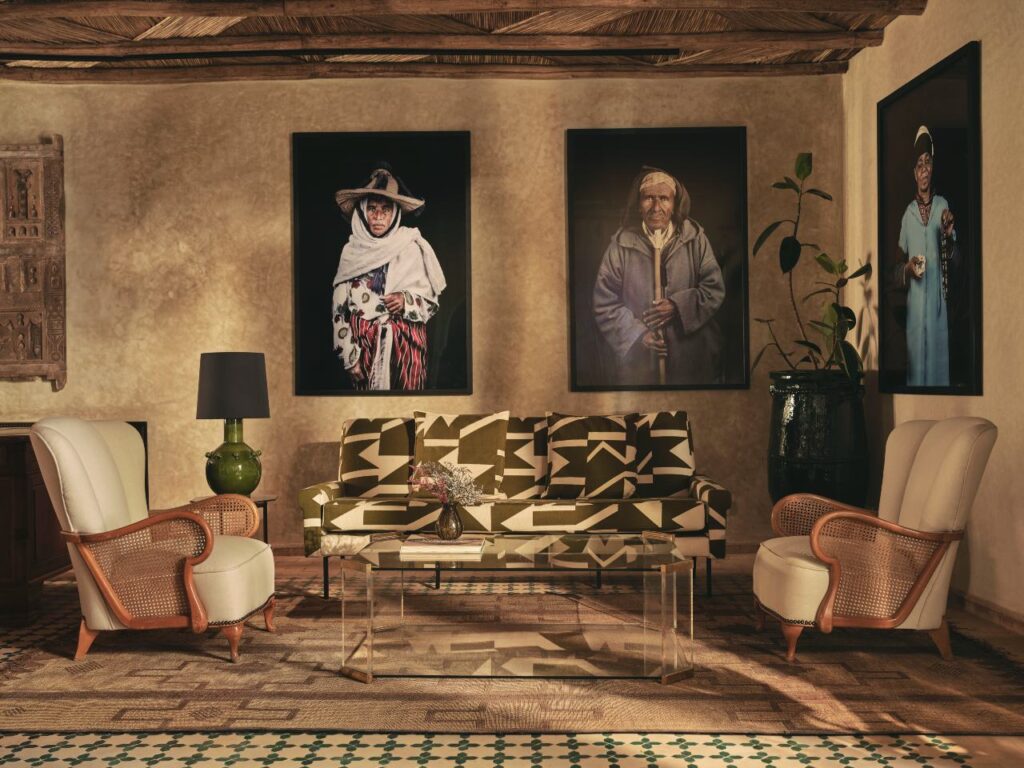The best places to stay in Bhutan
Our pick of the best hotels in each must-visit location.
Words by Ute Junker
Photos supplied
A longer version of the article originally appeared in the South China Morning Post.

Thimpu: soft landing
Bhutan’s capital is not exactly a bustling metropolis. With a population of less than 150,000, it is reputedly the world’s only capital city without a traffic light. (At the city’s busiest intersection, a white-gloved policeman keeps the traffic flowing.) It is worth starting your trip with a night or two in Thimphu to recover from the flight, adjust to the altitude – the city sits at 2,300 metres above sea level – and visit attractions such as the country’s tallest Buddha statue, the 51-metre tall Buddha Dordenma.
Perhaps the best reason to spend a night or two here, however, is the chance to stay at Six Senses Thimphu. “It’s the most beautiful lodge in the country,” a rival hotelier cheerfully tells me, and he’s not wrong. A hairpin road, the first of many you will encounter in Bhutan, takes you up to where the lodge sits high above the valley. Step into the double-height reception lounge and you are greeted by a wide-angle view of the mountains that rim the valley; you will find the same stunning view in your sprawling suite with its clean wooden interiors.
As you would expect from Six Senses, there is a strong emphasis on wellness, from the green shots you are served at breakfast to the yoga and meditation sessions, the steam room and sauna, and of course the spa treatments. The terrific menus include both local and western options – the hearty Tuscan bean stew is the breakfast to order if you are heading out on a hike – but it is the resort’s palatial architecture, its water pools reflecting elaborately-carved pavilions, that ensures a stay here will linger in your memory.

Punakha: sub-tropical bliss
It can take up to three hours to drive from Thimphu to Punakha following the mountain road over the 3100-metre high Dochula Pass where, on a clear day, you can drink in a stunning Himalayan panorama. Arriving at Punakha, which sits at 1200m, feels like arriving in a different world. Punakha’s sub-tropical micro-climate, its imposing dzong (a combination fortress, monastery and administrative centre) and its lush landscape of banana trees and rice paddies fed by the fast-flowing rivers, the Mo Chhu (Mother River) and Po Chhu (Father River), has made it an essential stop on any itinerary.
All of the big brands are represented here but two of the newer properties are particularly appealing. andBeyond, best known for its African safari camps, has launched its first Bhutan property here. andBeyond Punakha River Lodge is a luxurious tented camp by a fast-flowing river whose murmuring lulls you to sleep. There are plenty of thoughtful touches throughout the camp: the brass-clad tub in your tented suite is positioned beneath a skylight for evening stargazing, while a shuttered hatch lets your butler deliver bed tea and biscuits each morning before you rise. The spa is small but stunning and for those wanting to get active, rafting, kayaking and biking are all available.

On the far side of the river is another, very different tented camp. Pemako Punakha is the valley’s first locally-owned high-end property, one which general manager Amar Deep Chhetri describes as a “hospitality pilgrimage”. Arriving guests cross a pray flag-covered footbridge to get to the far side before walking (or taking an electric buggy) to the hotel.
A boldly-designed lobby, courtesy of maximalist designer Bill Bensley, leads to a long corridor that cycles through the holy colours of Buddhism. The tented suites are scattered across 200 metres of vertical slope but there is no need to strain your calf muscles – your butler will deliver you from one spot to another by buggy.
Decorated in the orange, yellow and white of the national flag, each one is kitted out with its own pool and eye-catching elements including beds big enough to sleep four. Guests are encouraged to delve deep into Bhutan’s spiritual traditions, courtesy of a resident lama who blesses you on arrival and can also lead you in meditation classes.

Paro: the big finish
Given that most flights depart Paro airport early in the day, it makes sense to spend a night or two in Paro at the end of your trip – particularly if you want to tackle Bhutan’s most famous hike, the steep climb up to the vertiginous Tiger’s Nest Monastery. If you like to pick up souvenirs, Paro’s craft shops are also your best choice.
The closest hotel to the airport, just a 10-minute drive away, is Como Uma Paro. This surprisingly tranquil hilltop spot, built around a reconstructed family home, has generously-sized suites decorated with hand-painted Bhutanese designs.
Along with the famous Como spa treatments, the highlight here is the food. Excellent Indian and Western options are available – everything from healthy choices like a killer chopped salad to a superior club sandwich and comfort food such as fish and chips – but it is the Bhutanese menu that really shines. Como Uma Paro has the best Bhutanese chef in the country, at least according to Bhutan’s king, who regularly calls on her services.



